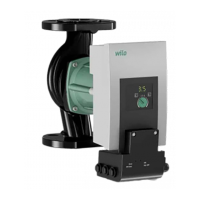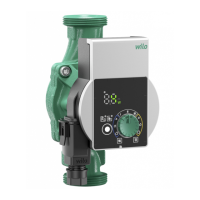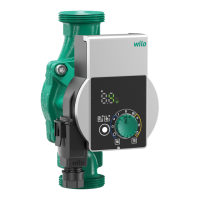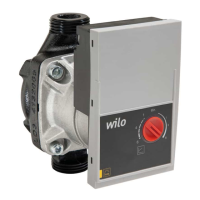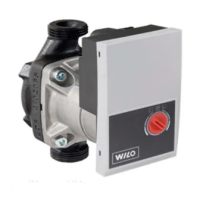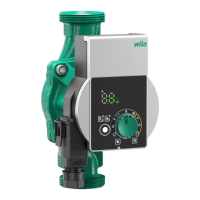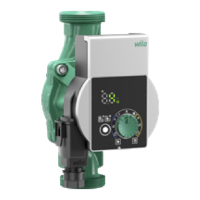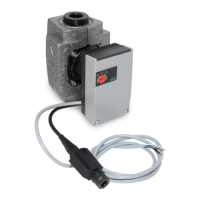Do you have a question about the Wilo Yonos MAXO and is the answer not in the manual?
| Model | Yonos MAXO |
|---|---|
| Category | Water Pump |
| Protection Class | IPX4D |
| Max. Operating Pressure | 10 bar |
| Frequency | 50/60 Hz |
| Temperature Range | -20°C to +110°C |
| Energy Efficiency Index (EEI) | ≤ 0.23 |
| Application | Heating, cooling, and solar systems |
| Operating Modes | Constant pressure |
| Motor Protection | Integrated |
| Materials | Cast iron, stainless steel |
| Voltage | 230 V |
| Ambient Temperature | Up to +40°C |
| Connection Size | DN 25 |
| Power Supply | 1~230 V, 3~400 V (depending on the model) |
Instructions are part of the product, essential for correct handling and use.
WILO SE 2022. Unauthorized reproduction, distribution, or utilization is prohibited.
Wilo reserves the right to change data without notice and is not liable for inaccuracies.
Wilo is not liable for inadequate configuration, improper use, incorrect installation, etc.
Safety instructions are displayed with signal words (DANGER, WARNING, CAUTION, NOTICE) and symbols.
Specifies qualifications for electrical, installation/dismantling, and operation personnel.
Electrical work must be performed by a qualified electrician, observing regulations.
Operators must provide instructions, ensure trained personnel, and provide protective equipment.
Check delivery immediately for damage and completeness. Make a complaint if necessary.
Carry on motor/pump housing, store in original packaging, protect from moisture/load.
Intended use includes observing instructions, specifications, and markings on the pump.
Misuse includes using non-specified fluids, improper handling, or exceeding limits.
Safety instructions for electrical current (shock) and magnetic fields (fatal injury).
Illustrates permissible installation positions for the pump.
Explains the nomenclature used for identifying different pump models.
Details technical specifications for Yonos MAXO/-D and Yonos MAXO-Z models.
Specifies minimum inlet pressure requirements based on nominal diameter and fluid temperature.
Lists the items included in the pump's package.
Lists available optional accessories for the pump.
Describes how the Wilo-Connect module extends pump functions.
Details the qualifications required for installation and dismantling personnel.
Outlines operator duties regarding regulations, safety, and equipment.
Highlights safety warnings regarding hot surfaces and scalding fluids during installation.
Steps for preparing the installation site and ensuring proper pump mounting.
Instructions for performing the physical installation of the pump.
Step-by-step guide for installing pumps with threaded pipe unions.
Step-by-step guide for installing pumps with flange connections.
Procedure for aligning the motor head to the correct installation position.
Guidance on insulating the pump for heating and air-conditioning systems.
Specifies national and local regulations for electrical connections.
Illustrates different voltage connection options (1~230 V, 3~400 V, 3~230 V).
Instructions for operating twin-head pumps as main and standby.
Details connection for the collective fault signal (SSM) to building automation.
Step-by-step guide for connecting the pump's electrical cable.
Procedure for charging the system and ventilating the pump.
Instructions for flushing the system and pump before commissioning or fluid changes.
Explains different operating modes (variable differential pressure, constant speed).
Guides on adjusting operating mode and pump output for heating and drinking water.
Procedure for safely shutting down the pump before maintenance.
Instructions for safely dismantling and reinstalling the pump.
Detailed steps for removing and installing the motor.
Specifies qualified personnel required for troubleshooting and electrical work.
Safety precautions to take before and during troubleshooting to avoid electric shock.
Lists common errors, their causes, and recommended corrections.
Explains fault signals (LEDs, SSM contact) and restart procedures.
Describes warning signals and their implications on pump performance.
Instructions for proper disposal to protect environment and health.

